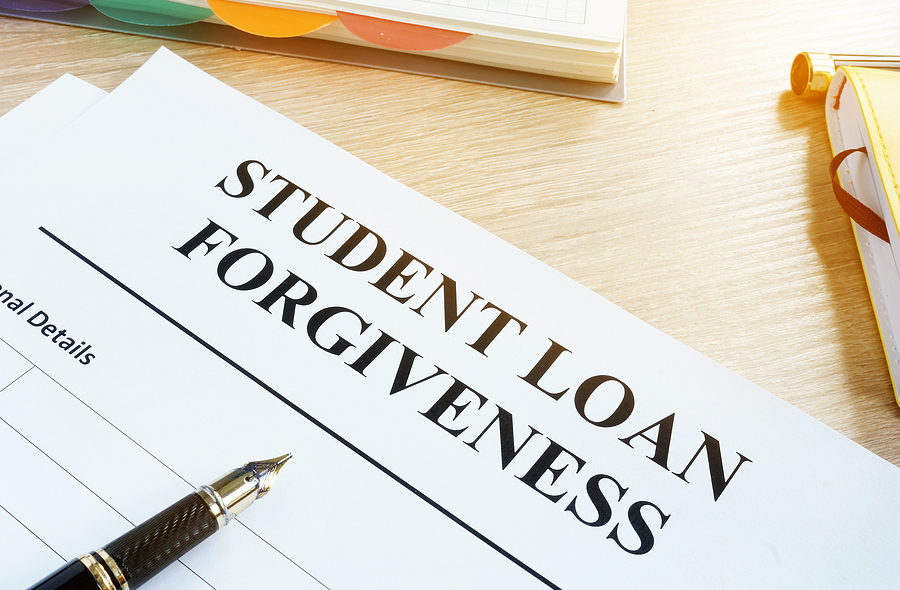With President Biden’s student loan forgiveness at an indefinite pause, the federal government is looking for other ways to help student loan borrowers receive relief from their debt. However, many of these changes hinge on the decision of the executive branch.
One reason student loan debt is so difficult to pay down has to do with the interest charged on the balance every month. According to the Education Department, $22 billion in interest was charged in the fiscal year 2019 alone. Keep in mind that no interest has been charged on federal student loans since the pause was issued on interest on these types of loans after the start of the COVID-19 pandemic.
After graduating, the federal government gives borrowers a grace period of six months before student loan payments begins. This six-month moratorium is meant to give borrowers a chance to establish themselves before the long arduous process of paying back their student loans begins. Unfortunately, during this time, interest rate continues to accrue on the debt, which only ends up increasing the total balance owed by the borrower.
If federal student loans cannot be forgiven, another possibility being considered by the administration is to do away with the practice of interest capitalization on the loans completely. By doing this, the administration hopes that borrowers will be able to easily navigate paying down their student loans.
This new policy does not come with a multibillion-dollar price tag like the loan forgiveness program did, but it could still be costly. Additionally, the number of borrowers reached by this plan is significantly lower than the loan forgiveness program.
The loan forgiveness program and other measures considered by the administration in addressing the loan crisis come under the expanded authority that comes with a national emergency.
With respect to the federal student loan forgiveness program, as of November 3, approximately 26 million people had applied for this relief. The one-time debt relief was available for borrowers earning less than $125,000 annually for single individuals or $250,000 for couples. Even though the loan forgiveness has been paused due to federal court orders, the administration still encourages borrowers to apply.
Other options exist for borrowers to have their loans forgiven. The administration is working on making the loan forgiveness process easier for borrowers who are disabled. They are also working on streamlining debt forgiveness for public service workers.
In addition, the administration has stated that they will discharge the student loan debts of tens of thousands of students who fell prey to predatory institutions like Corinthian College and ITT Technical Institute.
The Department of Education is also set to forgive $6 billion in student loan debt for borrowers who had previously applied for forgiveness through the borrower defense program. This form of debt relief depends heavily on a judge’s approval of a settlement agreement made between a group of student borrower advocates who represent approximately 200,000 student loan borrowers and the Education Department. The agreement grants debt relief for students who attended certain for-profit universities, including the University of Phoenix, Grand Canyon University, and DeVry University. The judge’s order on this settlement is expected any day.
Additionally, the Biden administration has announced plans for a new income-driven repayment program, which will reduce borrowers’ payments to five percent (5%) of their discretionary income. While lowering the payments will extend the life of the loan, nothing prevents the borrower from paying off their debt sooner. If the borrower consistently makes 10 years of payments via this income-driven plan and the balance is under $12,000, they will have their debt erased completely. Currently, the details of the plan are being developed, including when the plan will be released by the administration.
The Department of Education will be reviewing payments that are being made already under income-drive repayment programs. If borrowers have been paying on their loans via these plans for 20 to 25 years, they may be able to receive automatic loan forgiveness. The details regarding this review and how it will be implemented is also still being developed by the administration.
Please click here to read more.
For borrowers who are struggling with student loan debt, relief options are available. Many student loan borrowers are unaware that they have rights and repayment options available to them, such as postponement of loan payments, reduction of payments or even a complete discharge of the debt. There are ways to file for bankruptcy with student loan debt. It is important you contact an experienced Miami bankruptcy attorney who can advise you of all your options. As an experienced CPA as well as a proven bankruptcy lawyer, Timothy Kingcade knows how to help clients take full advantage of the bankruptcy laws to protect their assets and get successful results. Since 1996 Kingcade Garcia McMaken has been helping people from all walks of life build a better tomorrow. Our attorneys help thousands of people every year take advantage of their rights under bankruptcy protection to restart, rebuild and recover. The day you hire our firm, we will contact your creditors to stop the harassment. You can also find useful consumer information on the Kingcade Garcia McMaken website at www.miamibankruptcy.com.


